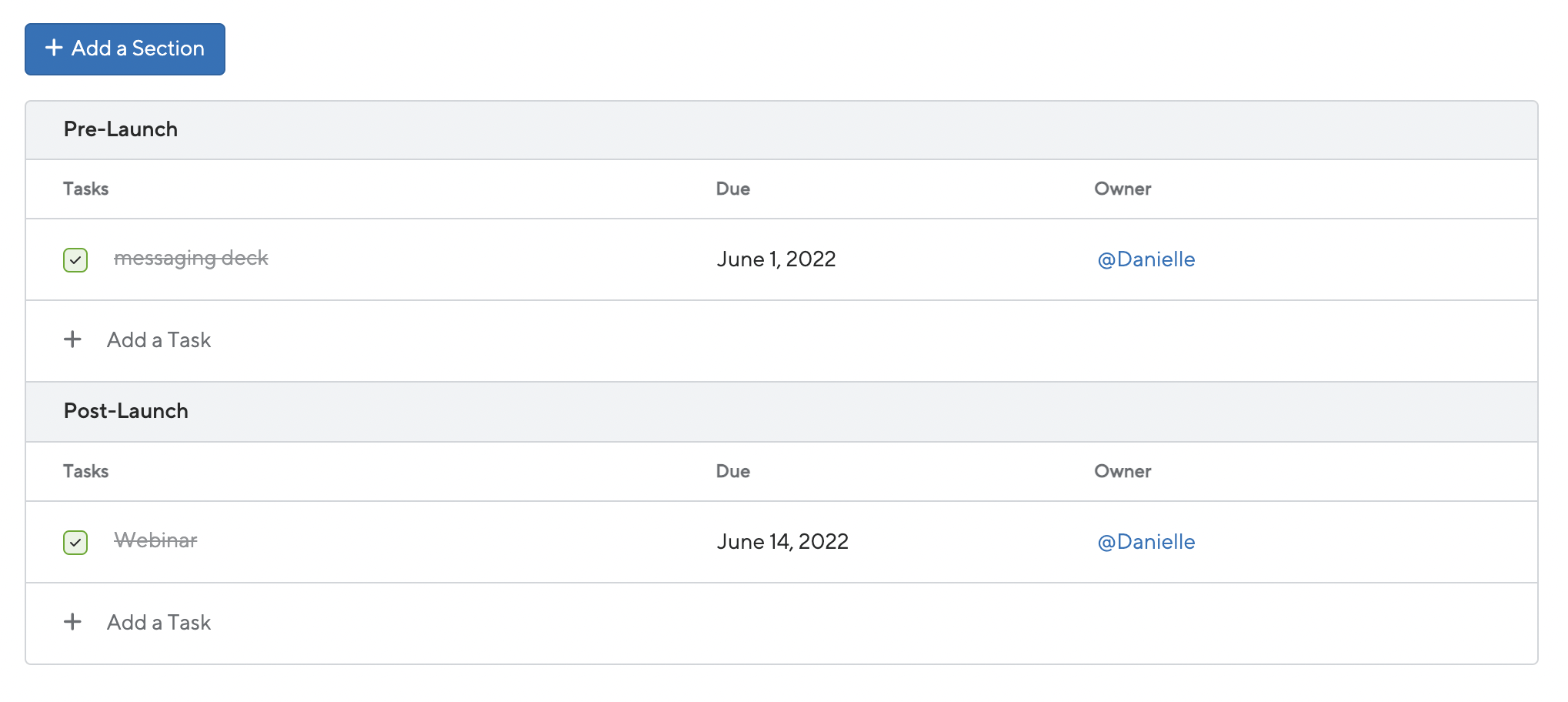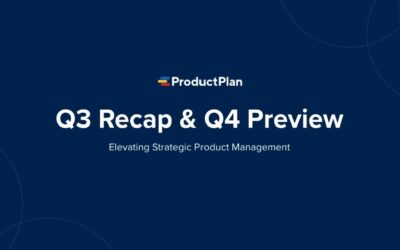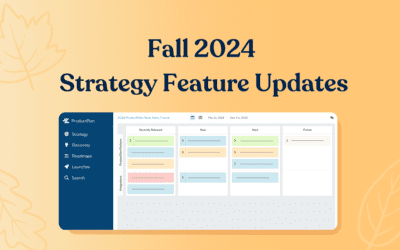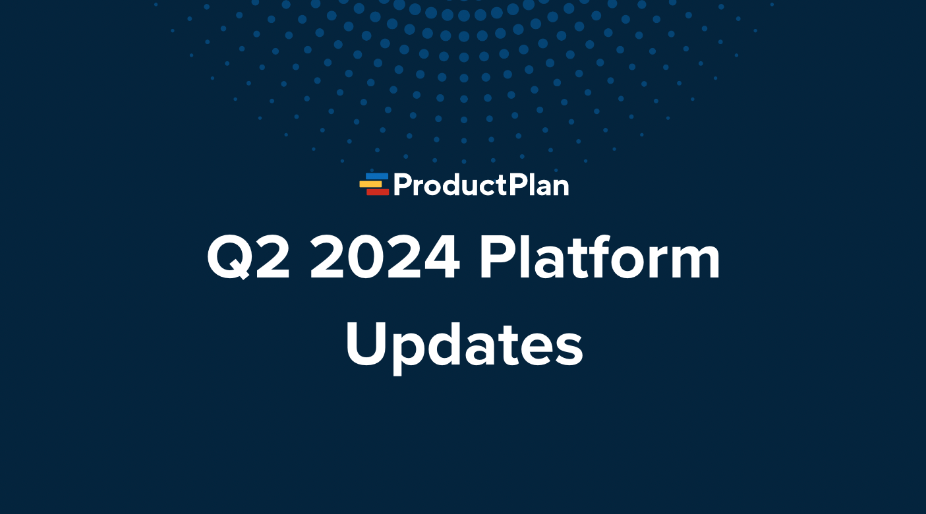Many of the customers we work with talk about their frustration with how they bring new products and features to the market. For some, launching a new product feels like an afterthought without a defined process. For others, a product launch is tossed over the fence to marketing, and what happens after that is a mystery.
We want to help product people create thoughtful and repeatable plans for their next launch. We’ve introduced Launch Management (currently in open beta), a new space in ProductPlan to plan, track, and share your upcoming launches.
One of the key parts of Launch Management is the Launch Checklist, where you can work with your go-to-market team to decide what needs to be done to ensure your launch’s success. But how do you build a Launch Checklist? What should you include? How do you tailor the deliverables for the needs of your product, your audience, and your team?
To help you, we’ve developed 6 tips for building your first launch checklist within ProductPlan. Read on to learn more!
1. Start Your First Launch Checklist With a List of Deliverables From a Previous Launch
After you create your first launch within ProductPlan, you’ll see what is perhaps a daunting blank slate of a launch checklist. Eventually, we will help you get started by populating your checklist with several task ideas that you could consider to help you launch your next product. But for now, the checklist remains blank, and you’ll have to build a list of launch tasks on your own.
But fear not. Your first launch created in ProductPlan is likely not the first launch you’ve experienced. If it’s not your first launch, we highly recommend you start your launch checklist by bringing over a list of tasks from a past launch. It doesn’t matter if they live in a spreadsheet, a slide, or even in your head.
What matters is you create something that you can see in ProductPlan. Play with it. Begin to build out a list of options for what could go into your next launch. Once you have that, you can share it with your teammates and get feedback. Every launch is different, so there will always be a bit of tweaking based on the launch goal, the product or feature launched, the target audience, and more.
Download The Product Roadmap Strategy Playbook ➜
2. Start Your Launch List Early and Get Feedback From Your Launch Stakeholders
As a product person, you might feel it’s your job to decide everything that should go into your next launch. You are the product expert, after all. But as you know, many launches involve work far beyond the conventional realm of product management. For example, there will be marketing campaigns to create product visibility and adoption, sales campaigns to acquire new customers, and support articles to help current customers understand how to use the latest thing you’ve built.
You likely won’t be the expert on every task required to launch a product. So as you begin to build out your launch checklist, we encourage you to add members of your team to collaborate with you.
By creating visibility into your launch checklist, you can spark conversations about the appropriate tasks required to ensure success. Field new ideas for training your internal teams on the latest product or find opportunities to communicate changes to new and existing customers.
Successfully launching a product is everyone’s responsibility – not just the product team’s. All people involved in the launch should own the quality and completion of their deliverables and the outcomes they aim to achieve. It would help if you also involved your stakeholders early in the process.
3. Launch Deliverables Should Have a Single Owner
It’s unlikely that every launch task will only require work from one person, and there will be many instances where an individual task may have multiple contributors. Take, for example, an enablement deck for your sales team. A project like this could involve a sales engineer, product marketing, and even a select group of salespeople for shaping and feedback.
Despite this, we’ve found it is best to select one person (not one team) responsible for driving the task forward, reporting on progress, and ensuring it is completed on time. Either the selected person is doing the bulk of the work, or it could be the person who manages the team responsible for the work.
Either way, a single owner means you know who to turn to when you need an update, and it also helps you create greater accountability among your go-to-market team.
4. Create a Playbook for Each Kind of Launch You Manage
One of the best ways to create a consistent, repeatable, and thoughtful launch process is to create playbooks for each kind of launch you manage. Of course, not all launches are created equal, so they shouldn’t receive the same treatment. Some will require more resources, and others can provide a more significant opportunity for product adoption and engagement. In contrast, others are a footnote only relevant to a specific list of customers.
To spend less time planning and more time executing, it helps to come up with a system to categorize your launches. Here are a few recommended ways you can go about it:
- Categorize your launch into tiers (i.e., Tier 1, Tier 2, Tier 3, etc.) based on the number of resources and effort required. The tiers are a great way to help you prioritize launches, especially when you have more than one happening around the same time.
- Categorize your launches based on who they impact the most. Does your launch matter more to your existing customer base? Or does your launch provide you an opportunity to acquire new customers? Answering these questions can help you determine the kinds of launch tasks required.
- Think about what you’re launching regarding how it helps your business. Does it close a feature gap between you and your competitors? Or does your new product create a competitive advantage? Another way to think about this is whether what you’re launching is something your market expects or finds delightful.
Regardless of how you choose to categorize your launches, the important thing is to build a playbook for each. Think about the tasks required for each category of launch and document them. Now, whenever you begin planning the launch of a new product or feature, you can categorize your launch and start running with an already-established playbook.
5. Choose Fully Deliverable Tasks
Every launch task will likely require a few subtasks to complete. For example, an in-app onboarding flow might require a series of product images. Which begs the question: what level of tasks should you include in Launch Management?
We recommend only including tasks that represent a fully completed deliverable. Because you will be wrangling a wide range of deliverables from different teams and stakeholders, you don’t want to over-clutter your launch checklist. It also gives the person responsible for the tasks the ownership and discernment to determine what is necessary and sufficient for that deliverable to succeed.
6. Create a Cadence to Review the Launch Checklist and “Check-off” What’s Complete
Timing is one of the most critical elements of any launch. From the first product development task to the final marketing material, there’s a crucial timeline for when things are assigned and completed. Knowing these tasks need to be managed by various stakeholders requires a release of control and setting expectations. When will you review the checklists as the launch owner and ensure things are running on schedule?
Whether your releases come each sprint, quarterly, or annually will determine the right cadence for you. You must regularly check in with the task owner and overall product launch owner. Whether in weekly meetings or managed asynchronously, setting expectations is crucial. You’ll want to ensure stakeholders are checking off tasks promptly. Though you need to ensure they don’t feel the added pressure of managing the minutia of each task.
Simply put, building a launch checklist aims to make your life as a product person more manageable. This provides you with a single place to oversee and drill into the details of each launch. It would help if you encouraged other team members to contribute and share ownership.
As Launch Management is currently in beta, please share your feedback and best practices you learn as you work on your Checklists!





